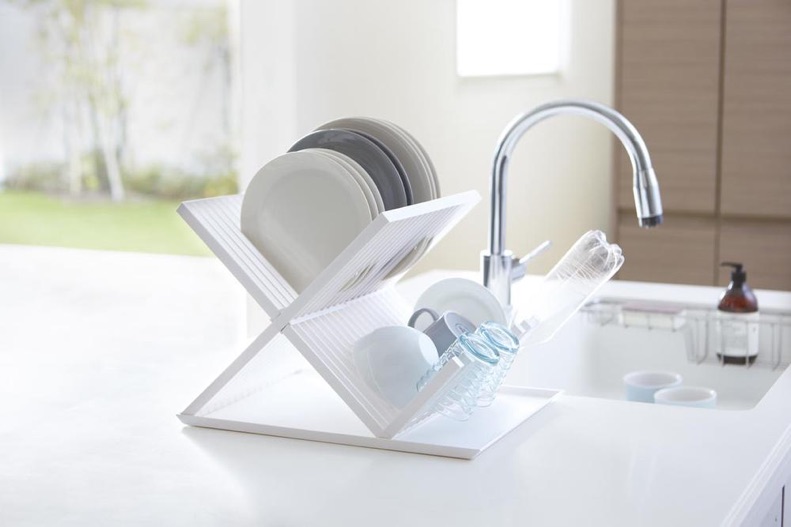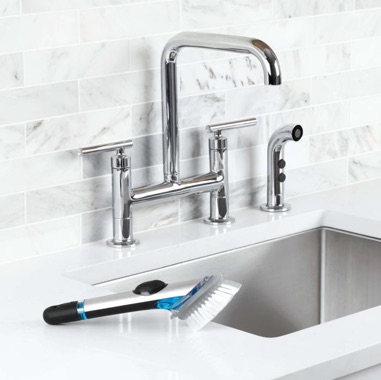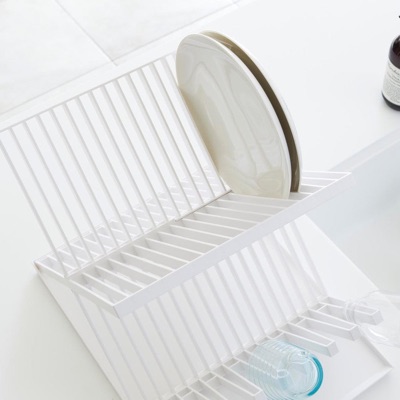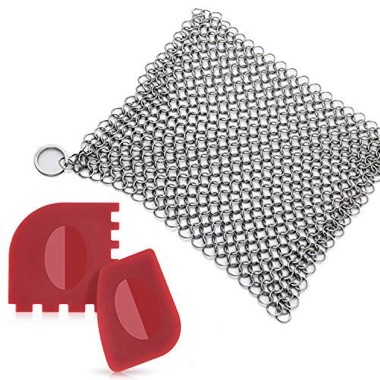the big little kitchen | Think Small, Live Large

Organization:
Adding a dishwasher to a small kitchen is not always a great idea, especially if it means subtracting valuable storage space. And the smaller the kitchen, the more valuable that storage space will be. While the alternative, washing dishes by hand, may seem to be too much of a chore, the reality is that it adds very little time to the process of cleaning up. More importantly, with the many chic dish racks and other accessories out there now offering you any number of stylish and clever ways to get the job done, the whole thing may feel far less onerous than it once might have seemed. So don’t give up that much-needed cabinet storage for a noisy, space-gobbling electric dishwasher quite yet. Check out the options below before you decide.
The Foldaway Dishrack by OXO collapses for quick storage so you can keep your counter clear when it’s not in use. It also features stainless steel racks arranged over a plastic tub with a drain spout, so nothing drips on the counter and no bottom mat is needed.
The best designed dish racks are elegant and sculptural, transforming the mundane scene of dishes drying into a still-life tableau, as with these two from Japanese manufacturer Yamazaki Home. Both are designed to consume minimal counter space so they don’t need to be stored when not in use.
The Black & Decker Grimebuster scrubber, left, brings battery-powered elbow grease to the job, while the ultimate cleaning set from Amagabeli, right, comes with a stainless-steel chainmail scrubber for cast iron pots and a pair of polycarbonate scrapers that help you get into the corners of any pan.
Living Without a Dishwasher
Smart, Elegant Solutions That Make Hand Washing Simple and Stylish
Of all the modern appliances in our kitchens, the dishwasher is, inch-for inch and dollar-for-dollar, among the least necessary and most expendable. After all, kitchen life went on quite well for centuries before the invention of these machines whose function is simply to finish the job of cleaning your dishes, a task which still requires a chunk of your time just to get it started. In fact, automatic dishwashers, as they are more formally known, only became a customary part of our homes in the 1970’s and 1980’s and even today they are used in less than 75% of the kitchens in the U.S. In other parts of the world that percentage is much lower. In the U.K., for example, fewer than 35% of the country’s homes have one. In an especially small kitchen, such as a compact city kitchen, the idea of giving over precious space to an appliance that merely reduces the time you spend on your dishes from 15 minutes down to perhaps 7 often makes little or no sense and for that reason dishwashers are frequently left out of kitchen designs where space is limited.
The Disappearing Dishwasher: In many small kitchens it’s necessary to skip having a dishwasher for more cabinet space and to embrace the old-school art of washing dishes by hand.
If pressed, of course, most people would probably admit that the chief reason they have a dishwasher is that it gives them a place to store their dirty dishes out of sight, freeing up counter space while their plates, pans and utensils are cleaned and dried, thus allowing them to put away their dish ware at a more leisurely pace. Others will tell you that they have to have a dishwasher to maintain the resale value of their home, which given the fierce reliance many people have on these machines is a valid argument. When I have design clients who don’t really want a dishwasher, but feel they need one for future buyers, I suggest that they add a 24-inch wide base cabinet next to the sink, which can be used for storage for the duration of their residency, but which can easily be replaced by a dishwasher if a future owner feels one is necessary. For the germophobes among us—you know who you are—there is also the idea that dishwashers with a high-heat disinfecting option can give you a bit of extra, probably illusory, peace of mind. There is little evidence that hand-washing dishes is a major health risk in our lives, but these are all concerns that should be weighed in making your decision.
To increase dish-drying capacity, this adjustable stainless and plastic model from Premium Racks, left, and the all-stainless model from HDS Trading, right, both offer two-tiered storage designs that provide a second level of space, with room for bulkier objects on top.
For even more capacity, this model from PoplarBox, left, adds length, measuring 33½ inches wide so it can sit over a good-sized sink and hold up to 10 dishes; in black-finished stainless steel. Or you can add height with this three-tier model from Stoneway, right, which features chrome and plastic racks.
The self-draining dish rack by simplehuman, left, features a plastic tray with hydrophilic coating to speed evaporation. The heavy stainless-steel “Rohan” dish rack from Zojila, right, also includes an integrated drain pan, but this one is reversible for use on either side of the sink.
The popular compact dish rack from KitchenAid, left, shows that even a major appliance maker can appreciate that its dishwashers are not for everyone. The nifty, Joseph Joseph dish rack, right, is expandable, with an adjustable spout so you can configure its size and position according to need.
Sometimes plain and simple are all you need. The basic OXO Aluminum Dish Rack, left, with integrated drain pan and spout, or the OXO Fold Flat model, right, with included mat, let you set up a functional dish storage system in flash and stow it just a quickly.
To help you whiz through the washing there are also scads of clever gadgets that your grandparents would have killed for. The Soap Dispensing Brush, left, and the Soap Dispensing Sponge Holder, right, both by OXO, save time and hot water by speeding up the job of re-soaping each scrubber.
Finally, there is the issue of which method has a more adverse impact on the environment, dishwashers or hand-washing. The data varies widely, but it’s generally argued that a household that always fills its dishwasher to capacity and uses minimal water to pre-rinse items before loading (two highly uncertain assumptions) will use less water and energy than one that washes by hand with the water running constantly (again, an iffy premise). Ultimately the choice, like all others regarding the environment, will be an individual one based on all of your personal consumption patterns. And whichever option you choose, the specifics of how you go about performing the job of washing dishes will probably have as much impact as the method chosen.
The simplehuman Sink Caddy, left, lets you keep your sponge and scrub brush on the side of the sink, avoiding soapy puddles on your counter. Uncommon Goods’ Sea Stone Splash sponge and brush holder, right, provides a porous stone base to keep your washing gear up and out of the way.

© Copyright 2023 Terms of Use / Privacy Policy






















